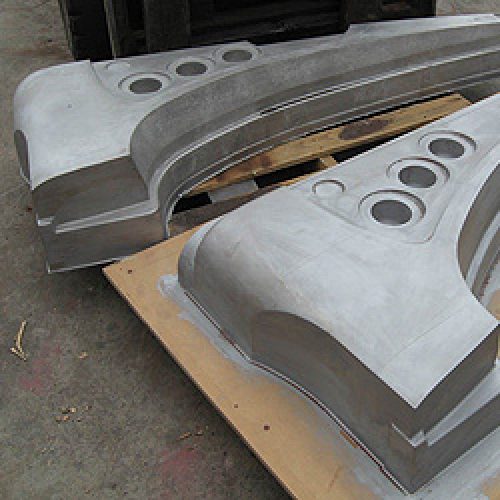Artistry and technique have been and continue to be the bookending disciplines that rule non-ferrous metal castings. Artistry is discernible in the brass and bronze castings that are used in office fixtures and living room accents, the candle stands and faux antique figurines that adorn coffee tables. Not content with defining these art forms, contemporary casting techniques benefit from a booming aluminium market. This market incorporates lightweight aerospace components, state-of-the-art automotive assemblies, and robust sections of strengthened fencing. Of course, we’d be remiss in skipping the utilitarian usage areas of other non-ferrous metals, so let’s begin with brass.
Brass Castings
The castings produced by this alloy are popular in valves and plumbing fixtures, places where performance and good looks go together when dirty or salty water is trapped in pipes and taps. Brass castings involve various tradeoffs, but non-corrosive varieties are popular, as are electric motor housings, conductive electrical assemblies, bushes, and pump impellers.
Copper-Based Electives
As seen from the above example, copper is a foundation element. It’s used in brass and bronze, alloying with zinc and tin (in that order) to create hundreds of handy non-ferrous metal castings. Artistic signs benefit from the three-dimensional dark-brown look, hence the bronze medals of Olympic fame. Next, gearing bronze is an invaluable product in the power transmission industry, with slender phosphor-bronze worm gears driving ratio-enhanced torque manipulators thanks to a healthy dose of wear resistance in the material’s base structure.
Versatile Aluminium Castings
This metal is well-known for its lightweight properties, but it’s only in the last few decades that alloying techniques have improved to the point that the metal now offers enhanced tensile strength. Engine components are made from high-grade aluminium. Aerospace parts are manufactured from the latest grades. This particular range of non-ferrous metal castings offers an aluminium-imbued featherweight factor that lowers overall weight while maintaining structural integrity.
We could literally fill pages of articles with examples of aluminium in action. The castings conform to modern casting technology, meaning the parts can quickly and efficiently assume complex geometrical outlines. Alloys of tin and copper, zinc and magnesium go even further than mainstream aluminium. Magnesium, for example, is commonly used to manufacture the compact bodies of digital SLR cameras due to its lighter than light nature, a weight-to-form ratio that’s typically thirty-three percent lower than a similar aluminium product. All-in-all, the non-ferrous manufacturing industry is dedicated to precisely matching customer-related product functions to material-defined features, thus keeping fabrication facilities and their managing teams happy.


